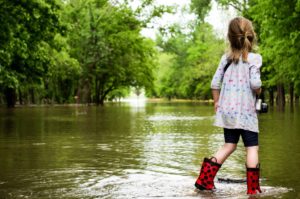We have much more to do and your continued support is needed now more than ever.
When Nature and Digital Screens Click

Are your kids indoors playing electronic games and watching too much television? For years, parents have been told that video games, TV, movies, and digital devices will make their kids into couch potatoes and maybe even rot their brains. What’s worse, from a nature perspective, is they will no longer have an interest in the great outdoors and could even develop what some describe as “nature deficit.” But is technology all bad or can it be part of the solution to this problem? A new report says an emerging generation of nature-based digital apps may help by showing that the outdoors and digital technology do not always need to be at odds.
 Recent research from the National Wildlife Federation shows that screen time and time beyond our screen doors are not necessarily at loggerheads. In fact, the report offers guidance on how digital technology can help children form a lasting connection with our natural world.
Recent research from the National Wildlife Federation shows that screen time and time beyond our screen doors are not necessarily at loggerheads. In fact, the report offers guidance on how digital technology can help children form a lasting connection with our natural world.
The National Wildlife Federation has investigated outdoor nature vs. technology question in our report, “Digital Technology’s Role in Connecting Children and Adults to Nature and the Outdoors.” We found that, with the right design features and use, digital technology can actually act as a powerful tool for helping children develop a lifelong relationship with nature and the outdoors. The report offers guidelines to app developers, software designers, parents and educators on how to choose the right educational apps. It finds that a true and lasting nature connection can actually be made through digital programs if they activate the senses and engage them in the direct, real world, identification of species and natural features, focus on animals in nature, and foster adventure scenarios such as quests to find things or act out stories. These are just a few of the design features the report lays out to help transition kids back outdoors.
These findings are especially important in focusing parents’ attention on the real disconnect facing children and nature today: a lack of unstructured outdoor play.

Nature has a lot of competition for our kids’ time, including increased extracurricular activities and parents’ changing work schedules. Digital technology also has played a role, with kids spending a whopping five to eight hours per day in front of a screen.
From a wildlife conservation perspective, this is a serious long term threat. Caring for nature and wildlife comes from spending time connecting with nature, whether playing at a neighborhood park or a weekend camping in the great outdoors. If children are not given opportunities to develop deep connections to nature from an early age, they risk growing up without the sense of care or commitment to being stewards of our wildlife, natural resources, public lands, and clean air and water.
The National Wildlife Federation offers many resources and programs to help connect kids and nature including Green Hour, Trees for Wildlife, the Great American Campout, and, of course, Ranger Rick publications.

If your kids are constantly staring at screen why not meet them where they already are? Face it, kids are going to be using computers, tablets and phones no matter what and most efforts to have them quit the digital world cold turkey and won’t go very far. So maybe, instead, we can make their screen time an open door to nature and an outdoor world.




















